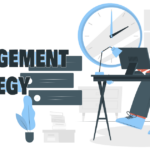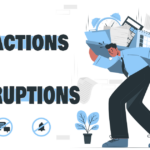Starting a business can be an exciting and challenging journey, but it’s not always easy to know where to begin. The process of starting a business can be broken down into several stages, each with its own set of tasks and considerations. Understanding the process of starting a business, from idea generation to launch, can help entrepreneurs navigate the journey with more confidence and success. The topics that will be covered in this series include understanding the different stages of the business development process, techniques for generating and evaluating business ideas, how to conduct market research and validate your business idea, tips for creating a business plan, the role of networking and building relationships in starting a business, the importance of building a team, strategies for raising funds and securing investments, how to create a minimum viable product (MVP) and testing it and the importance of creating a marketing plan to launch and promote your business. These topics will help entrepreneurs to turn their business idea into a successful and sustainable business.
Understanding the different stages of the business development process
Starting a business can be an exciting and challenging journey, but it’s not always easy to know where to begin. The process of starting a business can be broken down into several stages, each with its own set of tasks and considerations. Understanding the different stages of the business development process is crucial for entrepreneurs to navigate the journey with more confidence and success.
The first stage of the business development process is idea generation. This is where entrepreneurs identify a problem or opportunity in the market and come up with a business idea to solve it. This stage can involve conducting market research and gathering customer feedback, as well as brainstorming and evaluating different ideas.
Once a business idea has been identified, the next stage is market validation. This is where entrepreneurs test the feasibility of their business idea by conducting market research and gathering customer feedback. This can involve creating a minimum viable product (MVP) and testing it with potential customers, as well as using online surveys and focus groups to gather feedback.
The next stage is business planning, where entrepreneurs create a detailed business plan that outlines their products and services, target market, and financial projections. A business plan also serves as a roadmap for the business, outlining the steps and milestones that need to be achieved to launch and grow the business.
Once the business plan is in place, the next stage is raising funds and securing investments. This can involve approaching angel investors and venture capitalists, using crowdfunding and online platforms, or applying for grants and loans. This stage is crucial for securing the necessary funds to launch and grow the business.
The next stage is launch and promotion. This is where entrepreneurs launch their business and promote it to their target market. This can involve creating a website or landing page, developing a marketing plan, and using social media and online platforms to promote the business.
The final stage is ongoing management and growth. This is where entrepreneurs manage the day -to-day operations of the business and work towards achieving the goals outlined in their business plan. This can involve recruiting and hiring a team, managing finances, and monitoring progress and performance. It also includes continuously validating and optimizing the business through market research, gathering customer feedback and improving the product or service.
It’s important to note that these stages are not always linear and some stages may overlap or be repeated as the business evolves. Additionally, each stage may take different amounts of time depending on the business and industry. It’s also important to note that it’s not uncommon for businesses to pivot or change direction during the process, and that’s okay.
In summary, understanding the different stages of the business development process can help entrepreneurs navigate the journey of starting a business with more confidence and success. It can also help them identify where they are in the process and what steps they need to take next to move forward. Whether you’re just starting to develop your business idea or working on scaling your business, understanding the stages of the business development process can help you stay on track and achieve your goals.
Techniques for generating and evaluating business ideas
Generating a business idea is the first step in starting a new venture. However, not all business ideas are created equal, and it’s essential to evaluate and refine them before committing time and resources. In this article, we will explore some techniques for generating and evaluating business ideas to help entrepreneurs develop a strong and sustainable business.
Brainstorming: One of the most effective techniques for generating business ideas is brainstorming. This involves bringing together a group of people, either from within the organization or from outside, to generate as many ideas as possible in a short period of time. The key to successful brainstorming is to encourage wild and creative thinking without criticism or evaluation. This helps to generate a large number of ideas, which can then be evaluated and refined.
Customer development interviews: Another technique for generating business ideas is customer development interviews. This involves talking to potential customers to understand their needs and pain points, and then developing a business idea to address those needs. Customer development interviews are a powerful tool for validating business ideas and identifying opportunities in the market.
SWOT analysis: Once a list of business ideas has been generated, it’s important to evaluate and refine them. One technique for evaluating business ideas is a SWOT analysis, which stands for strengths, weaknesses, opportunities, and threats. This involves evaluating each business idea against these four criteria to determine its potential for success.
MVP testing: Another technique for evaluating business ideas is to create a minimum viable product (MVP) and test it with potential customers. This involves creating a prototype or a simplified version of the product or service and gathering feedback from potential customers. This can help to validate the business idea and identify any potential issues that need to be addressed.
Scalability: Finally, it’s important to consider the scalability of the business idea. This means evaluating whether the business idea has the potential to grow and expand over time. This can be done by looking at the potential size of the market, the cost of acquiring new customers, and the potential for creating multiple revenue streams.
In conclusion, generating and evaluating business ideas is a crucial part of the business development process. By using techniques such as brainstorming, customer development interviews, SWOT analysis, MVP testing and evaluating scalability, entrepreneurs can develop a strong and sustainable business idea. It’s important to remember that the process of generating and evaluating business ideas is not a one-time activity, but rather a continuous process that should be repeated throughout the life of the business. As the market, customer needs and technology evolves, it’s important to continually review and validate the business idea to ensure that it remains relevant and competitive. By using these techniques, entrepreneurs can increase their chances of success and launch a business that can stand the test of time.
How to conduct market research and validate your business idea
Conducting market research and validating your business idea is an essential step in the process of starting a business. It helps entrepreneurs to understand the market, identify opportunities, and confirm the feasibility of their business idea. In this article, we will explore some key methods for conducting market research and validating your business idea.
One of the most effective ways to conduct market research is through customer development interviews. This involves talking to potential customers to understand their needs, pain points and how they currently solve their problems. This can help to identify gaps in the market and opportunities for a new product or service. Additionally, it is a powerful tool to validate that there is indeed a market for the business idea.
Another way to conduct market research is by analyzing the competition. This involves researching the businesses that are currently operating in the market and understanding their strengths, weaknesses, and market share. This can help to identify opportunities for differentiation and to understand the competitive landscape.
Once market research has been conducted, it’s essential to validate the business idea through a minimum viable product (MVP) testing. This involves creating a prototype or a simplified version of the product or service and gathering feedback from potential customers. This can help to validate the business idea and identify any potential issues that need to be addressed.
It’s important to note that market research and validation is not a one-time activity but should be an ongoing process. As the market and customer needs evolve, it’s essential to continually gather feedback, analyze competitors and validate the business idea to ensure it remains relevant and competitive.
In summary, conducting market research and validating your business idea is an essential step in the process of starting a business. By using techniques such as customer development interviews, competitor analysis, and MVP testing, entrepreneurs can gather valuable insights, identify opportunities, and confirm the feasibility of their business idea. This will increase the chances of success and lead to the launch of a sustainable business.
Tips for creating a business plan and defining your target market
A business plan is a critical document for any entrepreneur looking to start a new business. It serves as a roadmap for the business, outlining the steps and milestones that need to be achieved to launch and grow the company. Additionally, it is a key tool for securing funding from investors and lenders. In this article, we will explore some tips for creating a business plan and defining your target market.
The first step in creating a business plan is to define your target market. This involves identifying the specific group of customers that your business will serve. It’s important to be as specific as possible when defining your target market. For example, instead of saying “everyone,” specify the demographics of your target customer such as age, gender, income, location, and so on. This will help you to create a more targeted and effective marketing strategy.
Once your target market is defined, it’s important to conduct market research to gather insights about the market size, trends, and competition. This information should be included in your business plan to demonstrate to investors and lenders that you have a thorough understanding of the market and the opportunity.
The next step is to create a financial plan, which includes projected income statements, balance sheets, and cash flow statements. This will demonstrate to investors and lenders that you have a clear understanding of the financial aspects of your business and that you have a plan for achieving profitability.
Another important aspect of the business plan is the marketing and sales strategy. This should include details on how you plan to reach your target market, what channels you will use to promote your products or services, and what your pricing strategy will be.
The final step is to create an action plan that outlines the specific steps that need to be taken to launch and grow the business. This should include timelines, milestones, and specific tasks that need to be completed. It’s important to be realistic and specific when creating this section of the business plan, as it will serve as a guide for the day-to-day operations of the business.
Once the business plan is complete, it’s essential to review and update it regularly. This will help to ensure that the business stays on track and that the plan remains relevant and aligned with the current market conditions and customer needs.In conclusion, creating a business plan and defining your target market are crucial steps in the process of starting a business. A well-written business plan can help entrepreneurs to secure funding, stay on track, and achieve their goals. By conducting market research, creating a financial plan, outlining a marketing and sales strategy, and developing an action plan, entrepreneurs can create a comprehensive and effective business plan that will increase the chances of success.
The role of networking and building relationships in starting a business
Networking and building relationships are important elements of starting a new business. They can help entrepreneurs to gain valuable insights, secure funding, and create strategic partnerships. In this article, we will explore the role of networking and building relationships in starting a business.
Networking is the process of building relationships with other people in the same or related industries. This can involve attending industry events, joining professional organizations, and connecting with other entrepreneurs online. Networking can help entrepreneurs to gain valuable insights about the industry, identify opportunities for partnerships and collaborations, and stay informed about the latest trends and developments.
Networking can also be useful when it comes to raising funds and securing investments. Entrepreneurs can use their network to connect with potential investors, mentors, and other business leaders who can provide guidance and support. Additionally, networking can help entrepreneurs to develop a strong professional reputation, which can be beneficial when it comes to securing funding or partnerships.
Building relationships is also an essential element of starting a business. Entrepreneurs need to build relationships with customers, suppliers, and other stakeholders to create a strong and sustainable business. This can involve building trust, creating partnerships, and developing a strong brand.
It’s important to note that networking and building relationships are ongoing processes that require time, effort and dedication. Entrepreneurs should be consistent in their efforts, and always be on the lookout for new opportunities to connect and build relationships.
In summary, networking and building relationships are crucial elements of starting a business. They can help entrepreneurs to gain valuable insights, secure funding, and create strategic partnerships. By attending industry events, joining professional organizations, connecting with other entrepreneurs online, and building strong relationships, entrepreneurs can increase the chances of success when starting a new business.
The importance of building a team and assembling the right resources
Building a team and assembling the right resources are critical components of starting a new business. A strong team can help to ensure that the business is able to achieve its goals and grow over time. In this article, we will explore the importance of building a team and assembling the right resources when starting a new business.
The first step in building a team is to identify the key roles that need to be filled within the organization. This will depend on the type of business and the goals that have been set. For example, a business that is focused on product development will require a different team than a business that is focused on sales and marketing.
Once the key roles have been identified, it’s important to find the right people to fill them. This can involve recruiting employees, hiring contractors or freelancers, or bringing on partners or co-founders. It’s important to look for individuals who have the necessary skills and experience, as well as a good fit with the company culture.
Once the team is in place, it’s important to provide them with the resources they need to be successful. This can include things like office space, equipment, software, and training. It’s also important to provide the team with a clear vision and set of goals for the business, as well as a clear understanding of their roles and responsibilities.
It’s important to note that building a team and assembling the right resources is an ongoing process. As the business grows and evolves, the team and resources will also need to adapt to meet the changing needs of the business. It’s important to be flexible and willing to make changes when necessary.In conclusion, building a team and assembling the right resources are critical components of starting a new business. A strong team can help to ensure that the business is able to achieve its goals and grow over time. By identifying the key roles that need to be filled, finding the right people to fill them, and providing the team with the resources they need to be successful, entrepreneurs can increase the chances of success when starting a new business.
Strategies for raising funds and securing investments
Raising funds and securing investments are important steps in the process of starting a new business. They provide the necessary capital to launch and grow the company. In this article, we will explore some strategies for raising funds and securing investments for a new business.
One of the most common ways to raise funds for a new business is through venture capital. This involves obtaining funding from venture capitalists, who provide capital in exchange for an equity stake in the company. This can be a highly competitive process, and it’s important to have a strong business plan and a solid team in place.
Another strategy for raising funds is through angel investing. This involves obtaining funding from angel investors, who are typically high net worth individuals who provide capital in exchange for equity. Angel investors can provide valuable mentorship and connections in addition to funding.
Crowdfunding is another way to raise funds for a new business. This involves obtaining small amounts of funding from a large number of individuals, typically through an online platform. Crowdfunding can be a great way to validate a business idea and gain traction before seeking larger investments.
It’s important to note that raising funds and securing investments is a process that can take time and effort. Entrepreneurs should be prepared to pitch their business to multiple investors and be ready to answer questions about their business plan and financial projections.In conclusion, raising funds and securing investments are important steps in the process of starting a new business. Entrepreneurs can explore strategies such as venture capital, angel investing and crowdfunding to raise the capital they need to launch and grow their business. However, it’s important to remember that this process can take time and effort, and it’s important to have a strong business plan and a solid team in place. It’s also important to be prepared to pitch the business to multiple investors, and be ready to answer questions about the business plan and financial projections.
How to create a minimum viable product (MVP) and testing it
Creating a minimum viable product (MVP) and testing it is an important step in the process of starting a new business. It allows entrepreneurs to validate their business idea and gather feedback from potential customers before committing significant resources to the project. In this article, we will explore the process of creating a MVP and testing it.
The first step in creating a MVP is to define the core features of the product or service that are necessary to solve the problem or meet the needs of the target customer. This should be based on customer research and market analysis. The MVP should be the minimum version of the product that can be used to test the concept and gather feedback.
Once the MVP has been defined, it’s important to create a prototype of the product or service. This can be a physical prototype, a wireframe, or a minimal version of the final product. The prototype should be simple and easy to create, and it should be used to test the concept and gather feedback from potential customers.
Once the MVP has been created, it’s important to test it with a small group of potential customers. This can be done through focus groups, beta testing, or user testing. Feedback from these customers will be used to refine the MVP and identify any issues that need to be addressed.
It’s important to note that creating a MVP and testing it is an iterative process. Based on the feedback gathered from the test, the MVP may need to be refined or completely redesigned. This process should be repeated until a final product that meets the needs of the customer is developed.In conclusion, creating a MVP and testing it is an important step in the process of starting a new business. It allows entrepreneurs to validate their business idea and gather feedback from potential customers before committing significant resources to the project. By defining the core features of the product, creating a prototype, and testing it with a small group of potential customers, entrepreneurs can develop a final product that meets the needs of the customer and increase the chances of success.
The importance of creating a marketing plan to launch and promote your business
Creating a marketing plan is an essential step in launching and promoting a new business. A marketing plan outlines the strategies, tactics, and resources that will be used to reach and engage customers, generate leads and ultimately drive sales. In this article, we will explore the importance of creating a marketing plan to launch and promote a new business.
The first step in creating a marketing plan is to define your target market. This includes identifying the specific group of customers that your business will serve and understanding their needs, pain points, and behavior. This information will be used to create a targeted and effective marketing strategy.
Once the target market has been defined, it’s important to conduct market research and competitor analysis to understand the market, identify opportunities, and gather insights about the competition. This information should be included in the marketing plan to demonstrate a thorough understanding of the market and the opportunity.
The next step is to develop a branding and messaging strategy. This includes creating a unique brand identity and messaging that will be used to communicate with customers and differentiate the business from competitors.
The marketing plan should also include specific tactics and resources that will be used to reach and engage customers. This may include tactics such as content marketing, social media marketing, email marketing, and paid advertising. The plan should also include a budget and a timeline for executing the tactics.
It’s important to note that creating a marketing plan is not a one-time activity but should be an ongoing process. As the market and customer needs evolve, it’s essential to continually review and update the plan to ensure that it remains relevant and aligned with the current market conditions.
In conclusion, creating a marketing plan is an essential step in launching and promoting a new business. It outlines the strategies, tactics, and resources that will be used to reach and engage customers, generate leads and ultimately drive sales. By defining the target market, conducting market research, developing a branding and messaging strategy, and outlining specific tactics and resources, entrepreneurs can create a comprehensive and effective marketing plan that will increase the chances of success when launching a new business.
How to handle legal and administrative tasks and compliance when starting a business
Handling legal and administrative tasks and compliance is an important aspect of starting a new business. Failure to do so can result in fines, penalties, and even legal action. In this article, we will explore some of the key legal and administrative tasks and compliance that entrepreneurs need to consider when starting a new business.
The first step in handling legal and administrative tasks is to choose the right business structure. This includes deciding whether to register the business as a sole proprietorship, partnership, limited liability company (LLC), or corporation. Each structure has its own set of legal and financial implications, and it’s important to choose the one that best suits the business’s needs.
Once the business structure has been chosen, entrepreneurs need to obtain any necessary licenses and permits. This can include things like business licenses, occupational licenses, and permits related to zoning and land use. Failure to obtain the necessary licenses and permits can result in fines and penalties.
Another important aspect of legal and administrative tasks is compliance with tax laws. This includes registering for state and federal taxes and staying up-to-date with the tax laws that apply to the business. It’s important to work with a tax professional to ensure that the business is in compliance with tax laws and to minimize tax liability.
Entrepreneurs should also consider intellectual property (IP) protection. This includes trademarking the business name, registering copyrights, and filing patents. This will help to protect the business’s ideas and creations from infringement.
It’s important to note that legal and administrative tasks and compliance are ongoing processes. As the business grows and evolves, it’s essential to stay informed about the laws and regulations that apply to the business and to make any necessary changes to ensure compliance.
In conclusion, handling legal and administrative tasks and compliance is an important aspect of starting a new business. Entrepreneurs should choose the right business structure, obtain necessary licenses and permits, comply with tax laws, and protect their intellectual property. By taking these steps, entrepreneurs can ensure that their business is in compliance with laws and regulations, and minimize the risk of legal action.













